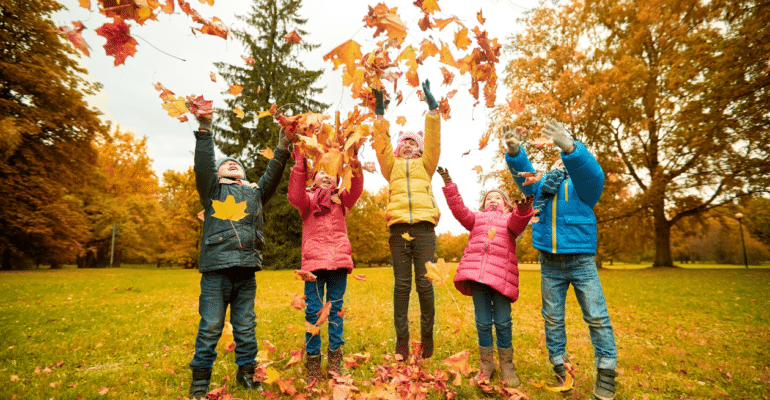Seasonal changes can bring both delight, but also distinct challenges. Seasonal transitions can disrupt daily routines and cause overwhelming sensory inputs. For many neurodivergent individuals, these transitions can cause some uncomfortable moments, especially for those with sensory sensitivities. We began to explore these ideas in Part 1 and in this post, we will explore how some neurodivergent individuals may experience and navigate seasonal changes as well as some ideas and tips to support a comfortable transition.
Changes in Outerwear
The shift from one season to another often necessitates changes in attire, disrupting established routines. While many people look forward to donning cozy sweaters and fashionable boots, neurodivergent individuals may encounter discomfort due to sensory sensitivities. Here’s how we can support them:
1. Foreshadowing Wardrobe Adjustments
Initiate discussions well in advance about the forthcoming wardrobe changes. By providing notice and discussing new clothing options you enable individuals to mentally prepare for this transition.
2. Trial Runs
Encourage neurodivergent individuals to try on their seasonal clothing indoors before integrating them into their daily routines. Gradual exposure helps them acclimate to the sensory aspects and reduces surprises.
3. Gradual Integration
Implement a gradual transition strategy by introducing one clothing item at a time. This approach empowers individuals to maintain a sense of control over their changing routines.
Changes in Weather
Weather fluctuations can significantly disrupt daily routines for neurodivergent individuals. The unpredictability of temperature, humidity, and other environmental factors can be overwhelming. To ease this transition, consider the following:
1. Weather Forecast Conversations
Keep individuals informed about upcoming weather changes by engaging in regular discussions about forecasts. This proactive approach aids in anticipation and preparation.
2. Sensory-Friendly Weather Tools
Utilize visual aids or tactile cues to convey weather forecasts effectively. This could include simplified visual charts or tactile representations to indicate impending weather shifts.
3. Scheduled Outdoor Adaptation
To help individuals adjust their daily routines to the new weather conditions, introduce scheduled, short outdoor sessions. Gradually extend the duration to enhance comfort and adaptability.
Changes in Food
Seasonal shifts often bring about alterations in dietary options and culinary routines, impacting daily schedules. Individuals with sensory sensitivities related to taste, texture, or smell may find these transitions particularly challenging. To support them, consider the following:
1. Advance Menu Discussions
Initiate conversations about upcoming food changes well ahead of time. Share pictures or descriptions of the new dishes and their sensory aspects to help individuals prepare mentally.
2. Preparation Workshops
Organize sensory-friendly cooking or meal preparation workshops. This allows individuals to become familiar with the ingredients and the sensory aspects of the new foods.
3. Taste Testing
Offer opportunities for taste testing in a controlled, low-pressure environment before incorporating seasonal foods into daily routines or presenting them at big events like a holiday celebration. This can help individuals become more comfortable with new flavors.
Holidays
Holidays are a time of celebration but can be overwhelming for neurodivergent individuals due to sensory overload from decorations, music, and social interactions. To help them prepare for holiday changes, consider the following:
1. Event Itinerary
Share a detailed itinerary of holiday events, including times and locations. This provides individuals with a clear understanding of what to expect.
2. Decoration Preview
If possible, show pictures or videos of holiday decorations and explain how they might change the sensory environment. Discuss any modifications made to create a more sensory-friendly atmosphere.
3. Social Strategies
Offer strategies for managing social interactions, such as providing a quiet space for individuals to retreat to if they become overwhelmed.
By addressing the sensory sensitivities associated with seasonal changes in routines, we can create a more inclusive and understanding environment for neurodivergent individuals. Foreshadowing and gradual integration, combined with empathy and communication, can ensure that everyone can adapt to and appreciate the beauty of each season while respecting their unique sensory needs and preferences. In doing so, we foster a more inclusive and accepting environment.
Interested in ways to support these transitions for students in schools? Check out our School Programs page to learn more about how The Shadow Project helps educators support their students individual needs.



Comments are closed.